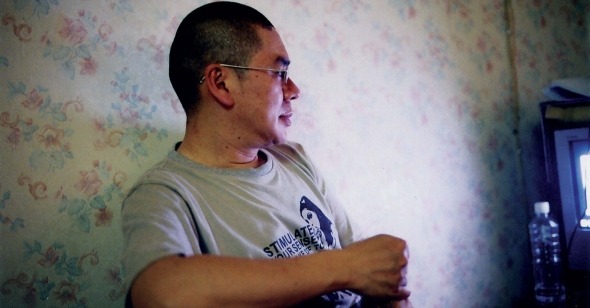A More Beautiful Life:
An Interview with Tsai Ming-liang
By Nick Pinkerton
Translated by Aliza Ma
The cinema of Tsai Ming-liang, at the turn of the millennium, was haunted by the directorŌĆÖs formative moviegoing experiences, like memories of lost love: Lee Kang-sheng watching a dupe of TruffautŌĆÖs The 400 Blows in What Time Is It There? (2001), or the very present absence of King HuŌĆÖs Dragon Inn (1967) in TsaiŌĆÖs Goodbye, Dragon Inn (2003). These films represented touchstones: Dragon Inn the quintessence of youthful moviegoingŌĆÖs sheer exaltation, The 400 Blows an introduction to the art film, so-called, with its opportunities for direct emotional autobiography, formal audacity, and unresolved melancholy.
As those films belong to TsaiŌĆÖs personal experience of life and movies, his films belong to my own. I first saw them when I was eighteen or nineteen, and really discovering the ŌĆ£art filmŌĆØ: ├ēric Rohmer and Robert Bresson and Michelangelo Antonioni and Rainer Werner Fassbinder and Mon oncle d'Am├®rique, movies that were of inestimable value in providing me ways of thinking about the world, and my place in it. Like Wong Kar-wai and Claire Denis, Tsai was a contemporary, then at the height of his powers, one of those figures who made you honestly believe that the great age for movies was right then and now. I loved all three, though Wong and Denis were intimidatingŌĆöWong had his fits of romantic abandon which life couldnŌĆÖt possibly live up to (and he knew it), Denis gave me a feeling like I got from listening to the first Bj├Črk albums, a sense of this magisterial, wonderful, frightening femininity that IŌĆÖd heretofore only suspected the existence of. Tsai felt like a confidantŌĆöand was uniquely attuned to the way that movies (or the songs of Grace Chang) could serve that function. When I walked alone and lonely, as I often did in those days, I felt that he was with me.
Tsai still inspires a belief in the possibility of cinematic greatness, even as heŌĆÖs been actively engaged in interrogating the changing identity of cinema. His latest theatrically released feature, Stray Dogs (2013), is as extraordinary as any he has made, and though it was rumored to be his last, his pace of work has not slackened. With Lee Kang-sheng, his muse and partner, he has now completed seven films in the Walker cycle, which feature Lee, in the garb of a Buddhist monk, inching his way through various environments, including busy cityscapes and the housing block in Kuching, Malaysia, where Tsai was raised prior to departing for Taiwan. On the occasion of a retrospective of his films at Museum of the Moving Image, I sent Tsai several questions via email. His answers are as follows, translated from Mandarin.
Reverse Shot: Prior to the release of Stray Dogs, you suggested it might be your last film for traditional cinematic distribution, as galleries and museums had become more amenable to the sort of work you were doing. What led to your feeling this way? Has anything happened to change your view?
Tsai Ming-liang: From my point of view, cinemaŌĆÖs departure from the movie theater is part of a natural progression of things, just like contemporary art is escaping the gallery. If box-office numbers had any correlation to the intrinsic value of oneŌĆÖs film, every last filmmaker in the world would give great credence to those numbers. However, as my films have zero financial potential in this economy, the question for me becomes, how can I prove the value of my films? Why do I continue to make films? Who am I making them for?
In 2000 after I made my fifth film [What Time Is It There?], my kind-hearted French production partner Bruno sold me back the international copyright for one Euro. Because of this, I had the chance to start financing and distributing my own films. At that time, my films already had a bad reputation in TaiwanŌĆÖs theatrical circuit, and no one wanted to release them. I convinced a small hundred-seat [stage] theater to rent their space to me for two weeks for my own theatrical run. A week before opening day, I took my actors to the streets to sell tickets to the filmŌĆöfor some strange reason, although no one in Taiwan came to see my films, my bald head was highly recognizable to local strangersŌĆöand after the first morning, astonishingly we had sold over 300 tickets. I quickly discovered a secret: in a regular theatrical release, my film would inevitably be up against about ten different commercial releases each week, and wouldnŌĆÖt even be given one-tenths of a fighting chance against those films, whereas if I sold tickets directly to a smiling stranger on the street, the chances of a positive outcome was 50/50, because answer can only be yes or no.
So I spent ten years selling tickets to my filmsŌĆöall starring Lee Kang-shengŌĆölike this. The box-office numbers werenŌĆÖt miraculous, but they were also not disastrous. Sadly, there was no way to keep a proper record. Then, in 2009, the Louvre-commissioned Face broke the mold by getting its premiere at the national theater in Taiwan. The officials of the cultural department warmly welcomed the director of the Louvre to the screening. Someone asked him, ŌĆ£Why did you choose to commission Tsai to make a film for the Louvre? Here, we can never understand what his films are about.ŌĆØ The reply was cryptic but brilliant: ŌĆ£A lot of people canŌĆÖt understand PicassoŌĆÖs paintings, but itŌĆÖs this mystery that beckons for closer examination and study.ŌĆØ I thought about this and wondered: one could go to the gallery to study a mysterious Picasso, but where would one go to study a mysterious film? Is the answer the theater, where the limited spectrum of offerings usually only represent Hollywood?
My films are made with an artistic intent, so why not show them in a gallery context? CanŌĆÖt one study cinema in the gallery as well?
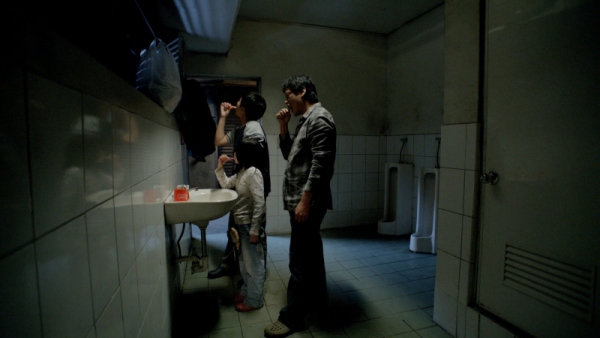
RS: You called Stray Dogs a film that ŌĆ£has no beginning and no end.ŌĆØ Is it important to you that it be watched open to close, or do you believe people can come in and out of it as they please?
Tsai: How does one enter into a life that has no beginning or end? When we are discussing matters relating to the audience, we tend to substitute the masses with ourselvesŌĆöthe audience is each of us and none of us. You can only represent yourself, me myself, and he himself. In fact, there can be no ŌĆ£collective audience,ŌĆØ the audience is one person because one can only truly represent oneself.
What if I asked you whether you think one should watch Stray Dogs all the way through or come as go as one pleases? I really think the answer doesnŌĆÖt matter. ItŌĆÖs up to you. Last year in Vienna, I put on a theatrical production called Xuanzang [The Monk from Tang Dynasty]. Someone in the audience told me he came back three times. Each time, he sat in a different seat and felt he saw an entirely different play. There were also a lot of walk-outs. Each of them saw a different play too. Some critics wrote that it felt like the walk-outs were part of the performance. Oddly, all my work seems to elicit these kinds of contradictory reactions. Perhaps itŌĆÖs not odd at all.
RS: Is there a film of yours that, more than any other, has produced violent responses from the public, the press, or both?
Tsai: In 2012, Walker was uploaded to youku.com [Chinese YouTube]. In one month the link got over four million views, and with that, a ton of horrible comments from people on the Internet. Now I have made a new film in the Walker series [No No Sleep], also starring Lee Kang-sheng, and IŌĆÖm curious to see what kind of reactions it will get on the internet three years later. However, in this film there is nudity, so perhaps the first test will be that of the censors. I doubt it will be easy to pass.
Of course, The Wayward Cloud was my most difficult fight against Taiwanese censorship to date. It was almost banned or largely re-edited, because people claimed it was an obscene film. But it won me the Silver Bear in Berlin, so in the end it was shown in theaters in Taiwan. A middle school teacher even brought his whole class of 18-year-old students to come see it. When I went go to the vegetable market, someone gave me kudos for making a porno, telling me I did good for Taiwan, and I got a 50% discount on his vegetables. At first, the poster for I DonŌĆÖt Want to Sleep Alone was not approved by the censorship board because Lee Kang-shengŌĆÖs nude backside is exposed in the image. They told me to submit a different poster, but I sent the same one. The same thing happened twice, and someone from the board called to yell at me, saying I was wasting their time. I told him to look at it again, carefully, and tell me his honest opinion. That was the fourth time, and it got a pass, but the film was rated X. A middle-school teacher really wanted her students to see the film. She put together a petition consisting of signatures from over 200 schools asking for the rating of the film to be changed so that 14-year-olds could watch it. At first the censors thought I had orchestrated this whole thing. I asked, ŌĆ£What good do you think that would do me?ŌĆØ So eventually the rating was lowered.
RS: Will there be more Walker films? What particular challenges do they pose?
Tsai: I love filming the act of walking, because no preparation is needed. Just a little makeup for Hsiao-kang, and a red monkŌĆÖs robe. We go to the location I have selected and begin to film. ItŌĆÖs like when a painter goes out to paint a still life. Have you ever heard of a painter planning or conceptualizing anything before going out to paint a still life? He paints what he finds and sees. Because the world is so full of wonders, one can never run out of subjects to paint. Why deliberately worry or challenge myself?
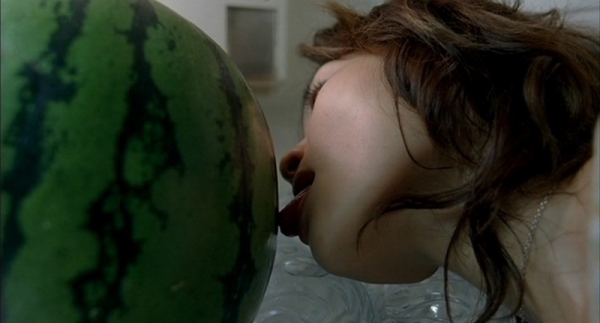
RS: While in some respects your work over the years has been marked by a steady ŌĆ£subtractionŌĆØŌĆöremoving non-diegetic music, minimizing camera movement, utilizing longer takesŌĆöyou have along the way produced films which break with this pattern. IŌĆÖm thinking of Face and The Wayward Cloud, especially. Have you encountered more resistance when breaking with your ŌĆ£patternŌĆØ of increasing minimalism? Does this narrative of increasing minimalism misrepresent your work?
Tsai: I really like simplicity. I want to share some lines from a short poem I recently read with you:
ŃĆĵłæÕĆæń£¤ńÜäµćēĶ®▓ÕźĮÕźĮµöȵŗŠõĖĆõĖŗÕ▒ŗÕŁÉ We should tidy up around the house
ÕŹ│õĮ┐ķĆÖÕŬµś»ń¦¤Ķ│āńÜäõĖĆķ¢ōµÖ«ķĆܵł┐ĶłŹ Although itŌĆÖs a simple rental house
ÕŹ│õĮ┐µłæÕĆæõĖŹõ╣ģõŠ┐Ķ”üķøóķ¢ŗ Although we will leave it very soon
µłæÕĆæõ╣ŗµēĆõ╗źÕŖ¬ÕŖøńÜäÕŁśÕ£© We struggle thus to exist in the world
µś»ÕøĀńé║µłæÕĆæķ£ĆĶ”üõĖ”µĖ┤µ£øńŠÄÕźĮńÜäńö¤µ┤╗ Because we yearn for a more beautiful life
ńŠÄÕźĮńÜäńö¤µ┤╗ In this beautiful life
µ£ĆÕ¤║ńżÄńÜäõĖĆķ╗×õŠ┐µś»õĖĆńø«õ║åńäČ The most essential aspects present themselves in plain view
Ōŗ»Ōŗ»
µł┐ÕŁÉÕ░▒µś»µłæÕĆæĶ║½ķ½öńÜäõĖĆķā©Õłå A house is part of our body
õ╣āĶć│µø┤Õ╗ŻķŚŖńÜäÕ▒▒µ×ŚŃĆüÕż¦Õ£░ By extension, a part of the forest, of the earth
µł┐ÕŁÉµĮöµĘ©õĖĆõ║ø Cleaner house
Õ┐āõŠ┐µĮöµĘ©õĖĆõ║ø Cleaner heart
µł┐ÕŁÉń®║µøĀõĖĆõ║ø Emptier house
Õ┐āõŠ┐ń®║µøĀõĖĆõ║ø Emptier heart
ńø┤Ķć│ĶÖøń®║ńé║ĶłŹ’╝łµ│©’╝ÜÕŹ│µł┐ĶłŹ’╝ēUntil emptiness can be home
Õż¦Õ£░ńĄÉÕ╗¼’╝łµ│©’╝ÜÕżÜµīćń░Īµ©Ėµł┐Õ▒ŗ’╝ēThis world is our dwelling
Ōŗ»Ōŗ»
Õ”éµ×£õĮĀÕĘ▓ńČōõĖĆńäĪµēƵ£ē If you lack everything
Ķ▓¦ń¬«Õł░ÕŬµ£ēõĖĆķĪåÕ┐āYou still possess a pure heart
ķéŻķ║╝Ķ½ŗõĮĀõĖŹÕ┐ģÕÉصā£ So please do not be greedy
ńøĪµāģńÜäÕģēµśÄ Enjoy the lightness and ethereality
ÕŬµ£ēńäĪµēĆõĮÅńÜäõ║║ Only a homeless person
µś»õĖŹÕ┐ģµöȵŗŠõ╗Ćķ║╝ńÜäŃĆÅHas nothing to clean up
[editors note: µć║õ╣ŗ-µöȵŗŠ Tidy, by Chan Zhi]
RS: Were you drawing from your own youth when you wrote the script for your first feature film, Rebels of the Neon Gods?
Tsai: Before I started directing feature films, for a few years I worked in television. At that time, TV shows were all escapist martial arts fantasies, melodramas, or historical dramas about World War II and the Japanese invasion. A university professor (named Wang Xiao Li) came back from the U.S., and brought me into writing scripts that comprised more social realism. In 1991 I filmed a miniseries on youth convicts. ThatŌĆÖs when I found Lee Kang-sheng in the streets. His family, with its very classic Taiwanese structureŌĆöa father from the Mainland, married to a local Taiwanese motherŌĆöand their quintessentially Taiwanese house were all very attractive to me. Plus, his delinquency, his air of mystery, ennui, brooding silence, and slownessŌĆ”the manner in which he smoked, all made me think of my strict father, who hardly spoke any words to me during my entire upbringing. After I finished filming Rebels of the Neon God, my father passed away. How I wished he could have seen a film I directed. How I wished I could understand him, be close to him, and even hug him. ItŌĆÖs as if I projected this yearning onto the worlds of my films, and in particular, Lee Kang-shengŌĆÖs character of Hsiao-kang with increasing intensity. In turn, gradually our real lives together seemed to reflect and materialize the worlds of the films. Hsiao-kang suffered a strange illness after filming Rebels. His neck became crooked.
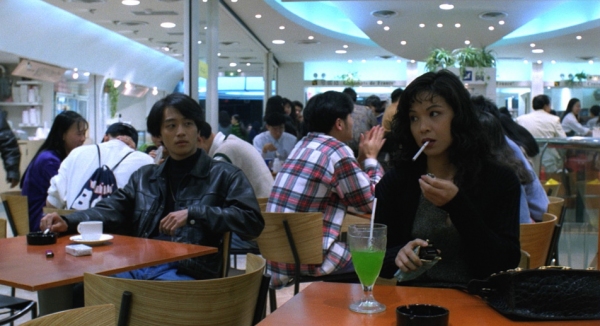
RS: You seem to be interested in public spaces in which lonely strangers can fleetingly intersectŌĆömarkets, video arcades, movie theaters. Do you see these public spaces disappearingŌĆöor people disappearing from them? How do you think the Internet has changed the fumbling for connection that your films depict? Have you thought to try to reflect the change of these rituals in your films?
Tsai: I think that creation and life are inextricable, and beyond this there is nothing else. If a filmmaker isnŌĆÖt a marketer, then essentially his work is the reflection of life through his own unique spiritual and psychological perspective. I like going to traditional markets because the vegetables sold by farmers are more fresh and tasty, and moreover the experience contains deeper flavors of life. When I was a little boy, I used to go to a market next to a clock tower with my grandmother. In my memory, that clock tower looked gigantic. A while later, when the market disappeared, the tower looked more diminutive than ever. Each time I walked past that tower I felt sorrow. Sometimes reality is so depressing one can barely face it. Those disappeared theaters from the memories of my childhood, when I began traveling the world, I realized they can be found everywhere, in equal states of dilapidation, many of which become cruising spots. I liked to go on my own adventures in these places. ItŌĆÖs so hard to describe the feeling I get in these spaces, like a dream covered in mold. Typical trajectories are not part of my world, or my films, and most definitely not part of my dreams.
RS: As early as Goodbye, Dragon Inn in 2003, youŌĆÖre concerned with a change in the popular movie-going culture of your youth, which has turned out to be quite prophetic. Did you have a sense that the movies, as theyŌĆÖd existed up until then, were in some kind of danger of disappearing? If so, what gave you this sense?
Tsai: With Goodbye, Dragon Inn, I was able to pay tribute to King HuŌĆÖs classic Dragon Inn, a film that has captivated my imagination since I was eleven years old. Forty years later, I have yet to find a wuxia film that transcends it, and this very fact fills me with awe. LetŌĆÖs look back at the outstanding filmmakers of the world: Truffaut, Godard, Louis Malle, Rohmer, Bresson of the French nouvelle vague; Fellini, Pasolini, and Visconti from Italy; Fassbinder, Herzog, and many others of the New German Cinema; Ozu, Naruse, Mizoguchi, and Kurosawa from the postwar Japanese cinema; Orson Welles, John Ford, and Alfred Hitchcock from America; and even further into the past, the masters of silent cinema, Charlie Chaplin, F. W. Murnau, and Dreyer. Now we can revisit those films with more freedom, and I am always astonished by how many new discoveries I find in them each time, and am left breathless. That is the essence of great cinema.
Every time IŌĆÖm on a long flight, I look at the hundreds of channels available on the entertainment consuls, and before they hand out the ear buds, I have already given up. Yet, when out of the corner of my eye, I see my neighbors enraptured by the latest monster and ghost films from Hollywood, Bollywood, or Europe on their little screens, I also want to know what is going on.
RS: Can you speak of some movies that had a vital impact on you as a boy or young man? How, if at all, has their memory been reflected in your later work?
Tsai: Perhaps a memory from when I was three years old? It was a Shanghainese production called The Carp Spirit from 1959. In one shot from a garden, the carp spiritŌĆötransformed into a beautiful womanŌĆörises up from the water; the color was so vivid, as if painted in front of my eyes. I was also entranced by Bollywood films with supernatural subjects (especially the films featuring the Hindi monkey deity Hanuman).
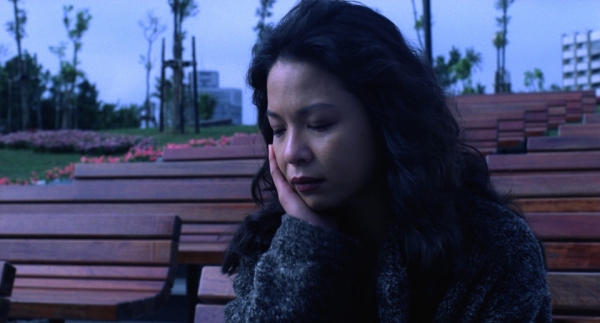
RS: Lee Kang-shengŌĆÖs scene with the head of cabbage in Stray Dogs, as well as that filmŌĆÖs final shot, are like Yang Kuei-meiŌĆÖs breakdown at the end of Vive LŌĆÖAmour in terms of showing unbroken, sustained suffering. Why is it important to look, long and unblinking, at pain?
Tsai: Of course I had no idea how long this shot would go on before we started, but it is like this with all the shots in my films. All I knew was that Lee Kang-sheng had to finish off this head of cabbage. With what method, mood, or emotion? I could not be sure, because I am not a performer. I am a mere observer, waiting for something to happen. I could only trust that Lee Kang-sheng would finish the cabbage. He is 46, and we live very closely together, so I have come to know his various states of mind and shifting moods quite well. I remember when we were filming The River, a scene required him to cry, he was only twentysomething then, and he couldnŌĆÖt cry. I smacked him twice on the face, but still no tears. Filming What Time Is It There?, it was much easier for him to cry, because his father had just passed away.
RS: Stray Dogs has three credited cinematographers, which is unusual. What necessitated this? Did you use different DPs for different situations?
Tsai: Everyone knows Liao Pen-jung, who has worked with me since Rebels. I knew he was a talent from the start. He always knows what I want, and his camera is always in the right place. Sung Wen-zhong is also a highly skilled DP, I greatly admire his sensibility for lighting and atmosphere. He taught me how to use light. My old lighting technician could not join the production of Stray Dogs because he passed away. His last collaboration with me was Transformation, a short gallery work. At that time, he was on crutches, helping me set up the lighting. Lu Qing-xin is his student, so when I started Stray Dogs, I really wanted involve him in the process.
RS: Was there a particular visual strategy that you were pursuing in Stray Dogs? I was struck by the extraordinary depth of the images, the degree to which the terrain was sculpted to stand in vivid relief.
Tsai: My wish is for each shot to be like a painting, and the light my pigment. So I approach every shot very slowly and with great care.
RS: Were there any set-ups that posed a particular problem?
Tsai: The riverside monsoon shot was the most excruciating. We only had two water trucks, and there were not enough fans. My actor Lee Yi-cheng didnŌĆÖt look sad at all, so I had to scream and curse at him. Afterwards I felt very sorry for him.
RS: I would like to know something more about the dank, black-walled apartment that the Chen Shiang-chyi character lives in. In seems almost like an art installation, like the Kao Jun-honn piece that appears at the end of the film.
Tsai: That was a house we found by surprise while scouting locations. It was wrecked during a fire, and I think there must be an ownership dispute, because the first floor has all been restored, but the top remained abandoned, singed, and blackened. I was amazing by the sight of these charred black walls, breathless over what a mysterious and beautiful sight they presented. When I decided to make it the main location, problems arose. What kind of furniture should I put into this space? ThatŌĆÖs why Stray Dogs appears to be a ghost film. Nothing looks realist, but more like images of a memory. But whose memory? The characters, or that of the house?
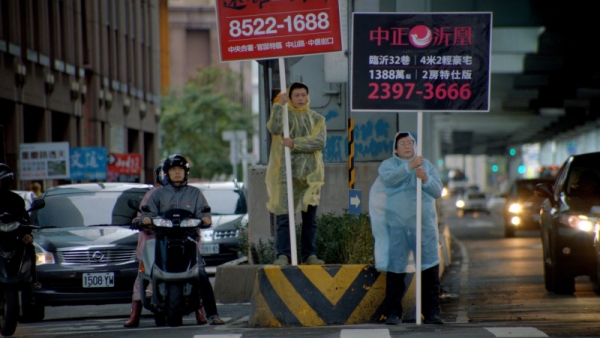
RS: Lee Kang-sheng working as a sandwich board advertiser in Stray Dogs seems to evoke an important film of the Taiwanese New Wave, Hou Hsiao-hsienŌĆÖs The Sandwich Man. Do you feel a nostalgia for this period? How do you evaluate the present state of Taiwanese cinema?
Tsai: During the era when The Puppetmaster was very popular, you can say that sandwich men went from being characters on the margins to being highly topical. In Stray Dogs, Lee Kang-sheng plays a human signpost, a very commonplace sight everywhere. They are like electric poles, trees, or walls on the side of the street. No one notices their presence, and no one notices one another. This is an era of non-presence.
Actually there is no real ŌĆ£presenceŌĆØ in the cinema of today either: produced, consumed, reproduced, and disappeared.
RS: In the inverse of the usual career trajectory, you have been making shorts far more proficiently than features lately. Why has that been? What are some advantages of the short format?
Tsai: What is a short film? What is a long film? After Face, four years passed until I filmed Stray Dogs. Many people thought I had retired, but I actually never stopped. Because of various opportunities which presented themselves to me, I have made films of different lengths using different formats and techniques, and for different screening platforms. Stray Dogs was shown in galleries in Taiwan. We made the projection screen out of crumpled paper used to cover the stage. Each shot was a separate projection, and audiences could go up and touch the screens. At times like these, donŌĆÖt you feel like cinema has been liberated?
